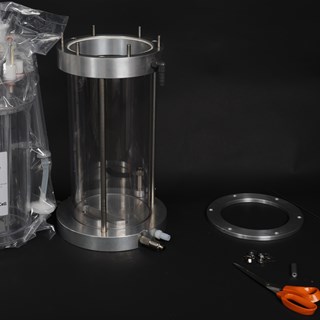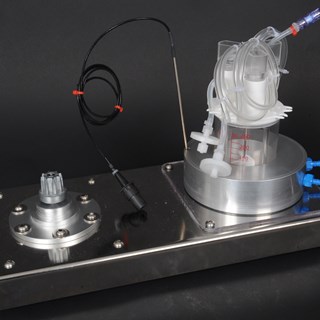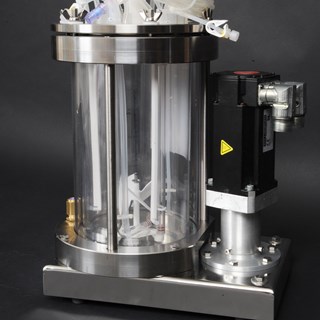In order to accommodate the various heating and cooling requirements from the many different PCS's in the pharmaceutical industry we have designed a range of accessory products, building blocks, units, devices.




Every Process-Control-Systems (PCS) use the PID (or PI) principle for thermal regulation
Algorithms used for control / thermal treatments use PID loop control. A PID controller is a piece of software embedded in a PLC and operate via control loop feedback principle and expected to control a process using only process variables. Every application is different and requires specific settings and approaches. PID stands for Proportional-Integral-Derivative and the response of the control loop is entirely dependent on these three terms:
Proportional - P: The proportional term looks at current error (difference between set point and process variable) of the system. Depending on the controller, the proportional term is expressed as either Proportional Band (PB) or gain. PB and gain are simply the inverse of one another (1/X). For example, a 20 percent proportional band equates to a gain of five. Knowing what term a controller is using is critical to correct tuning.
Integral - I: This term is related to the accumulated past error of the system. Integral is typically expressed in repeats per minute or minutes per repeat. The “repeat” is the current (proportional) error. The integral is the sum of error over a period of time.
Derivative - D: The derivative term looks at the expected future error of the system. The derivative is applied based on the rate of change of the process variable. While most heating applications can function quite well with just the PI terms being used, the derivative term can help with a process that has a quick and sudden change (for example, opening an oven door and closing it). Derivative works in the opposite direction of the proportional term and acts as a dampener.
The output of the PLC/controller is the sum of the above three terms. The combined output is a function of the magnitude and duration of the error signal, and the rate of change of the process value.
Process-Control-Systems (PCS) from the various manufactures have different and mostly old fashion thermal control systems. In general this approach require careful consideration in selecting a PCS. Most PCS do not include "adaptive tuning" and are not able to differentiate between delivered STR and SUBs in various sizes. And most PCS do not give freedom to alther the PID values.
In more popular terms this example for heating purposes (needed for cultivation) - an endothermic process:
- the loop consist of a thermocouple, a controller and a power regulator
- the physical controller have a 0-150 watt power regulator as energy input
- a selected "setpoint" could be 37°C and the process is started
- the measured "process value" is 20C and 100 watt is added for close to an hour
- the process value is jumping up and down between 39C and 35C
- the difference between the setpoint and measured process value is called "error signal"
- process value again reach 39C and power is shut off by - P -
- in order to avoid process value is dropping below 37C - I - will add 20 watt in 5 seconds every minute
- future trend is guessed, predicted by - D - in order to avoid next overshoot
In more popular terms for cooling purposes, like for fermentation is more complicated and requires - an exothermic process:
- a liquid circulation jacket around the fermenter vessel for removing thermal energy generated by the process
- a supply of a liquid at lower temperature than planned, calculated in the fermenter
- control of flow and temperature with preferably a thermal storage - like >50 liter water kept at costant temp
